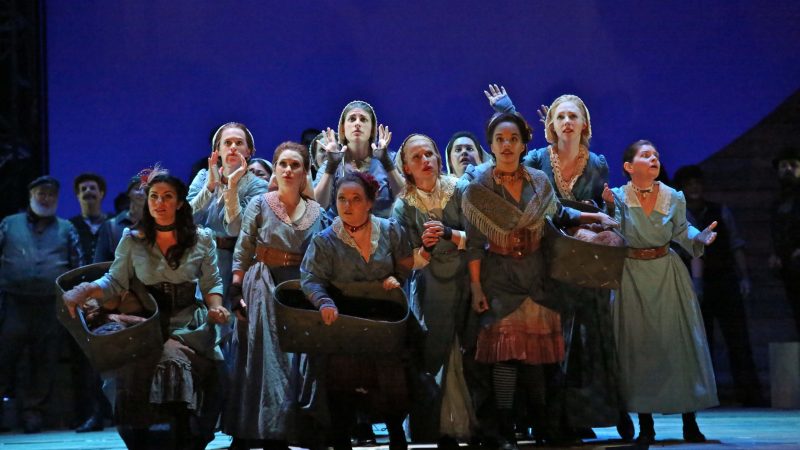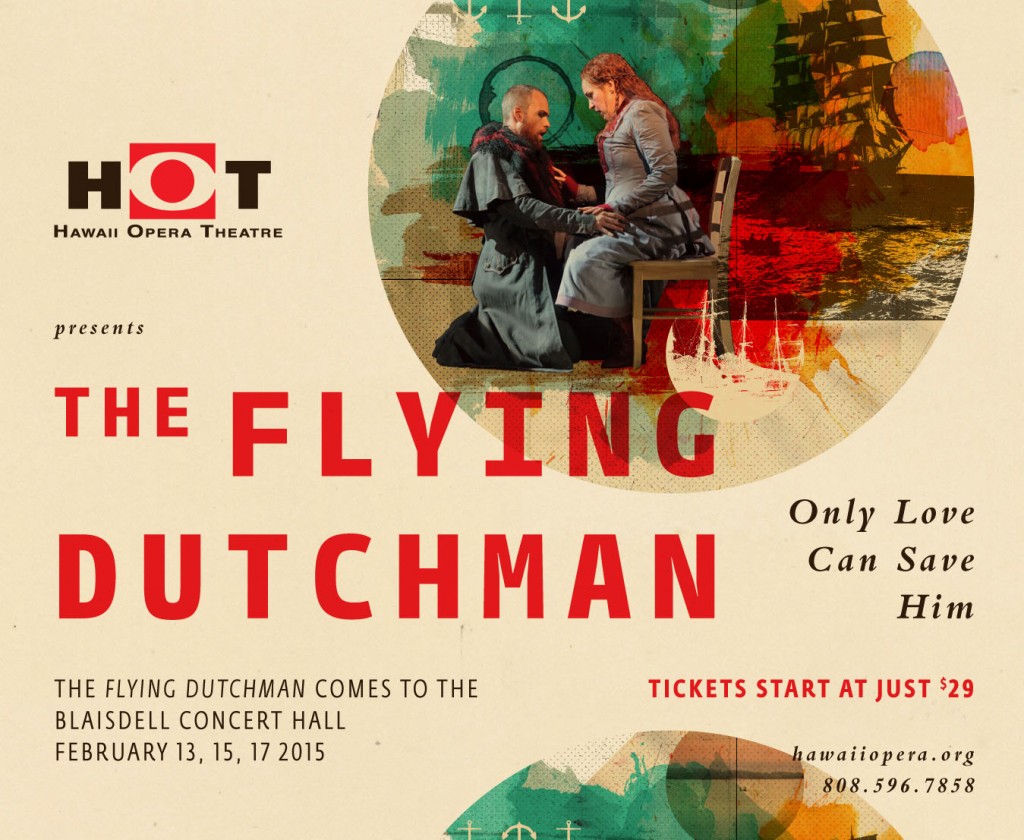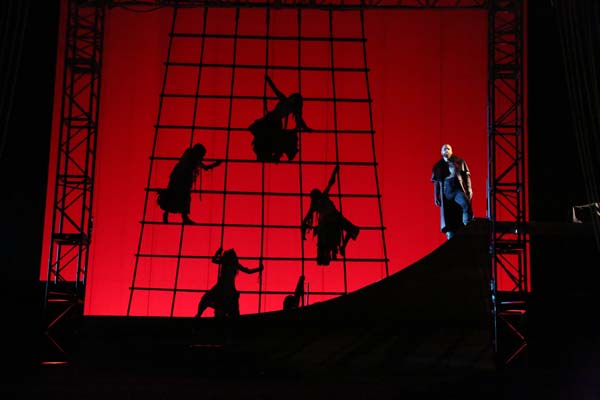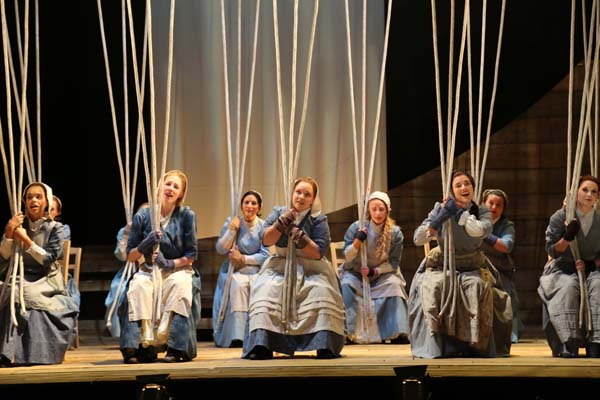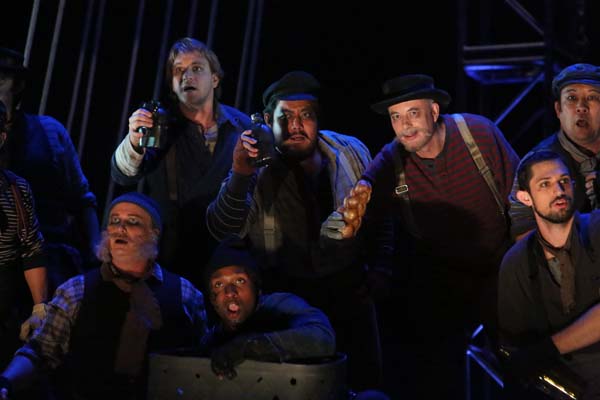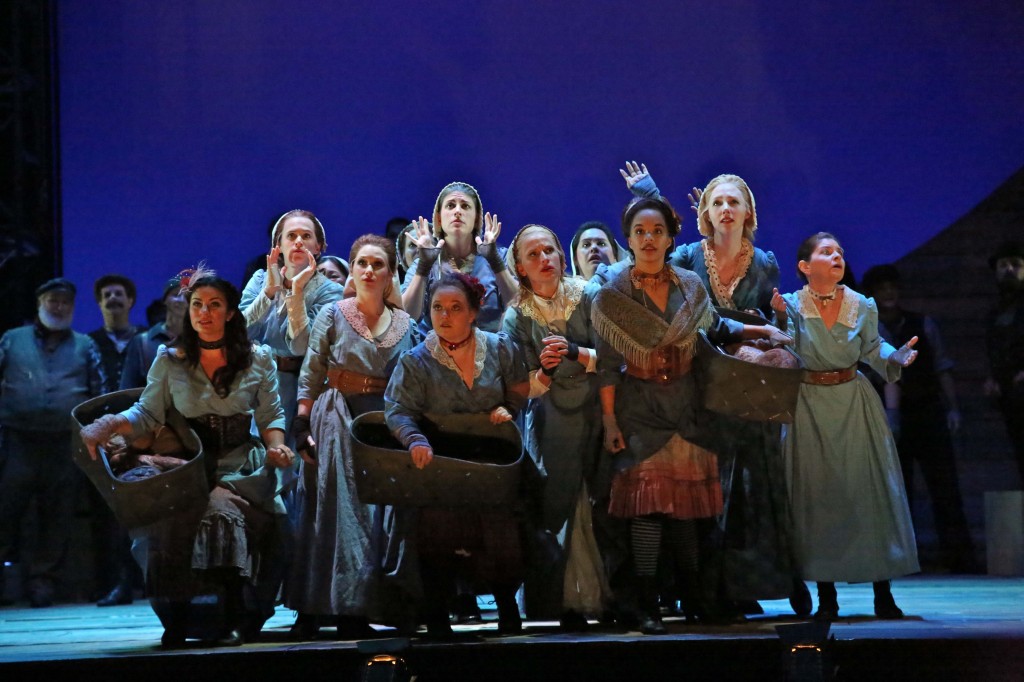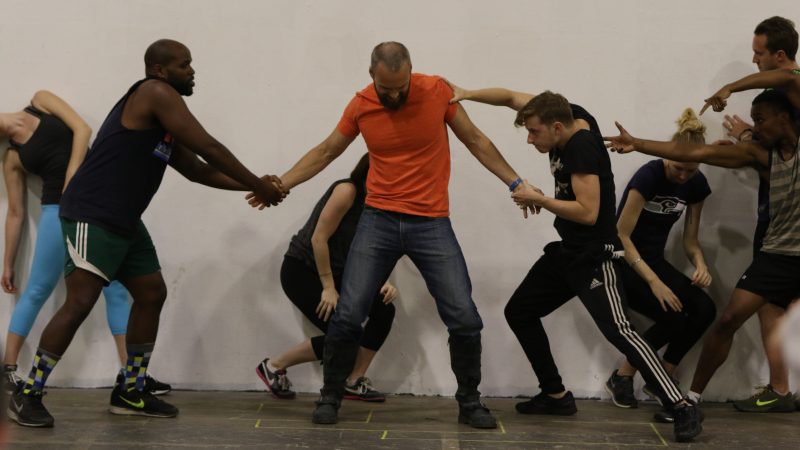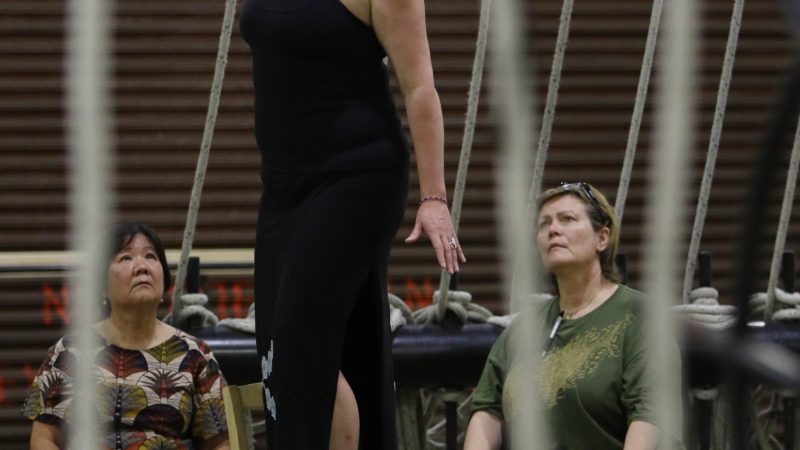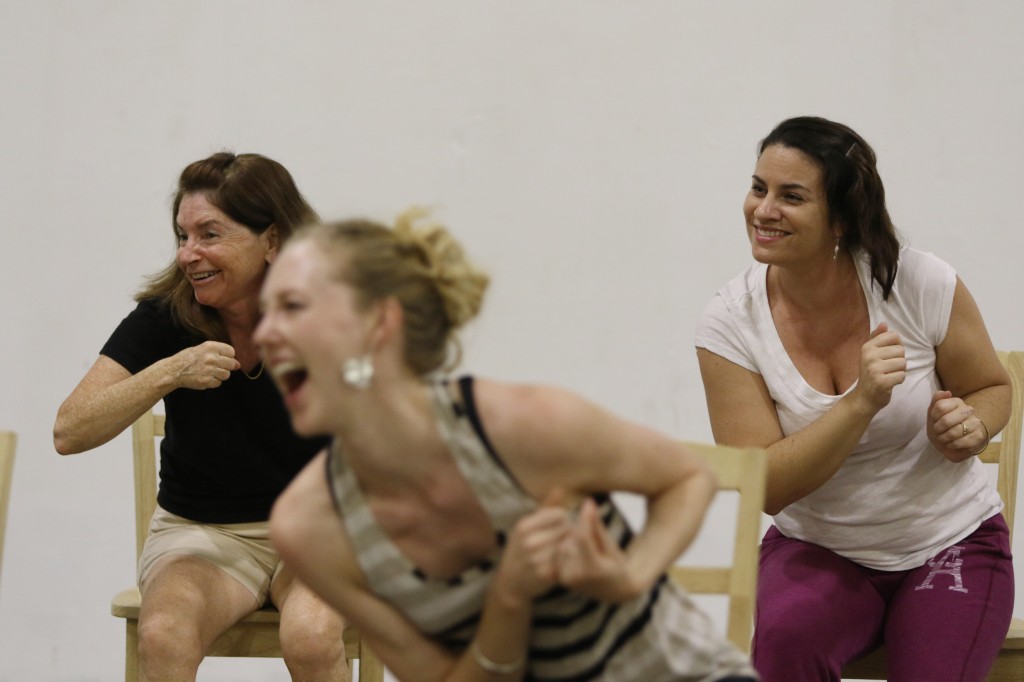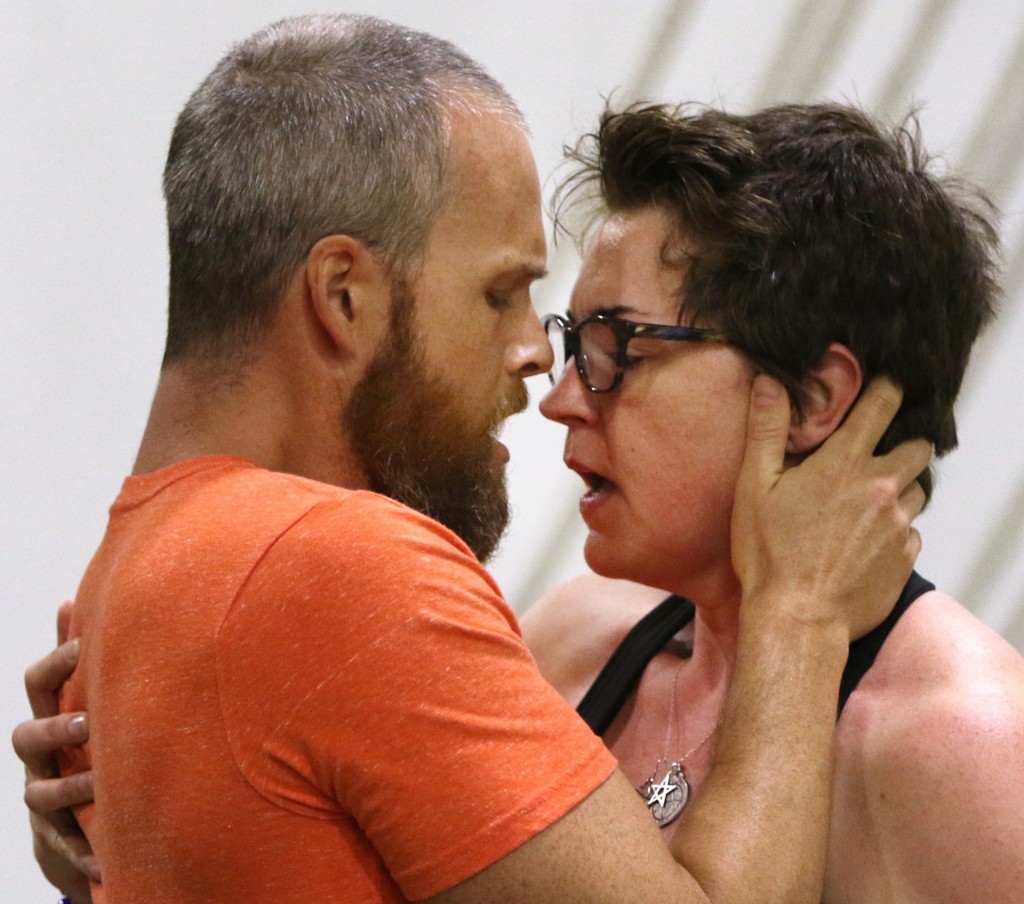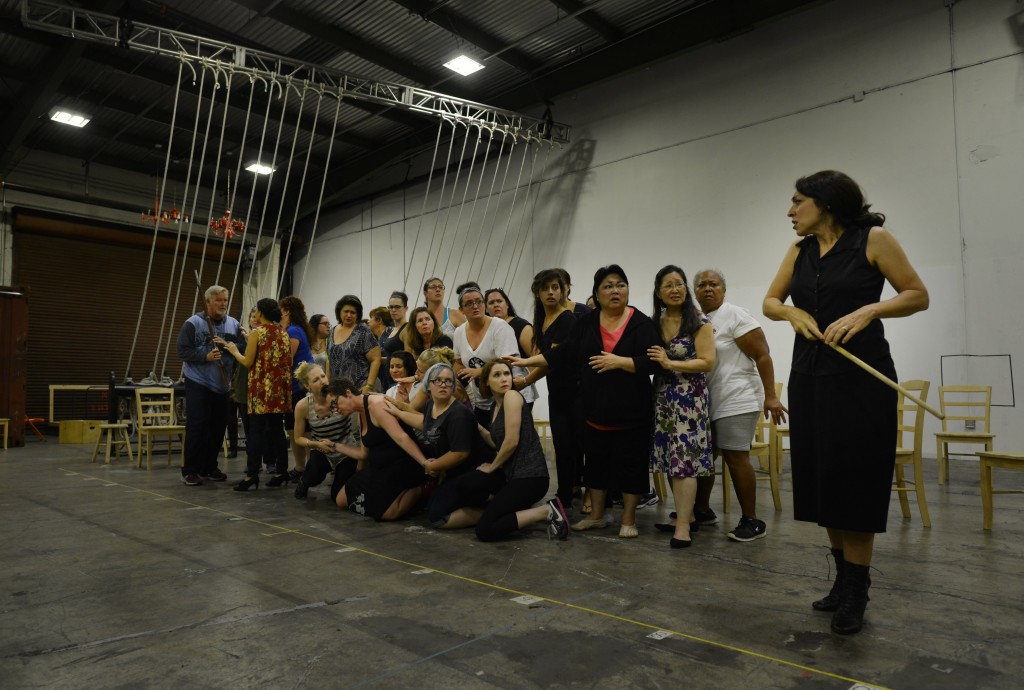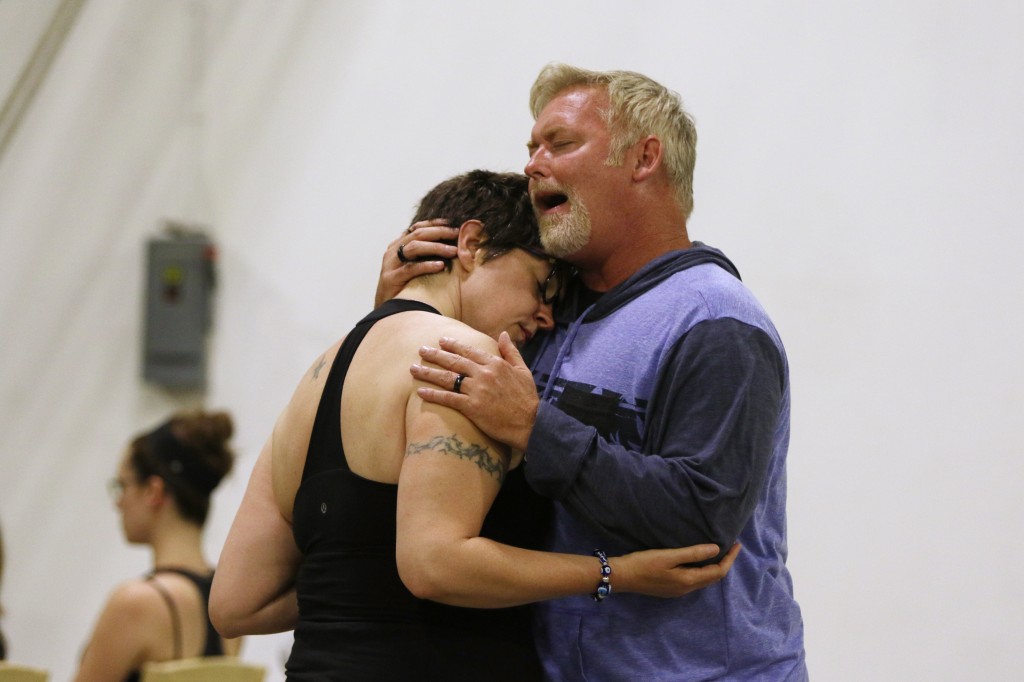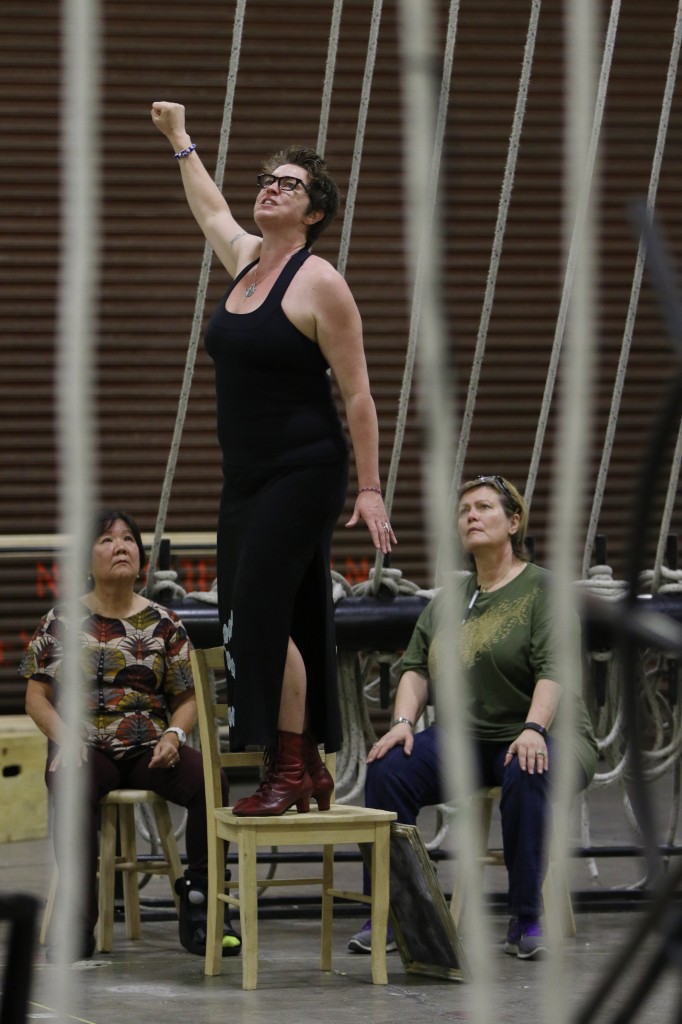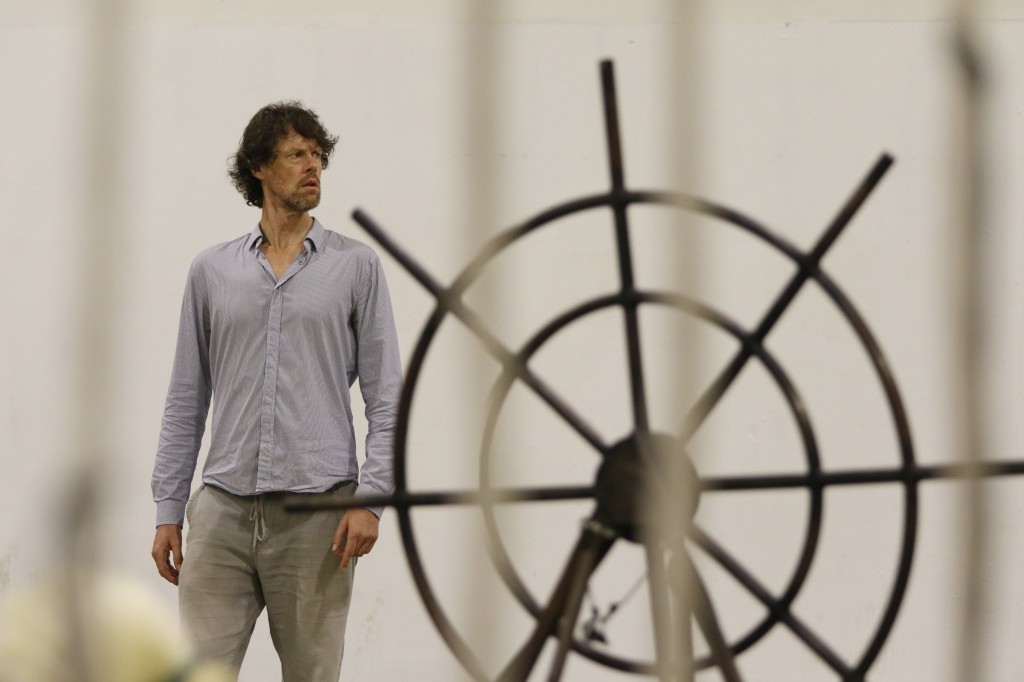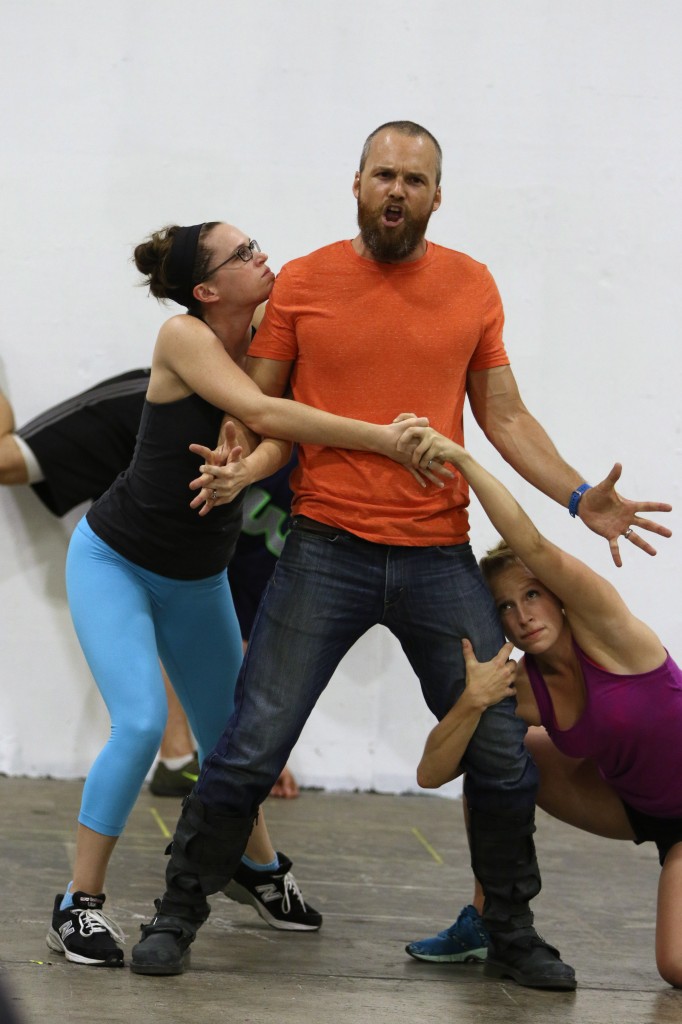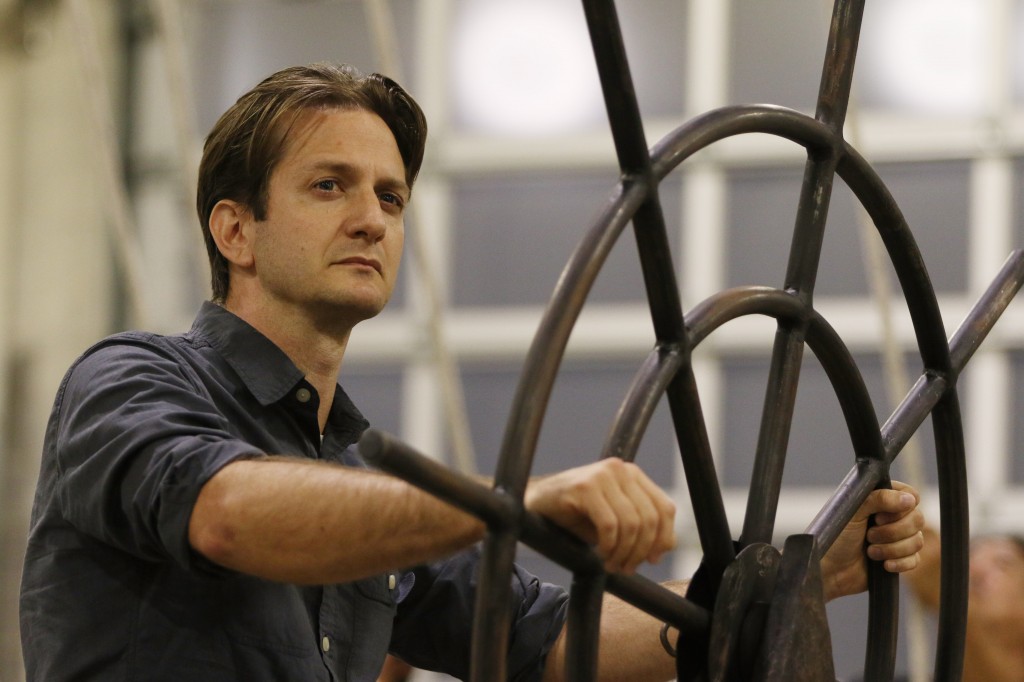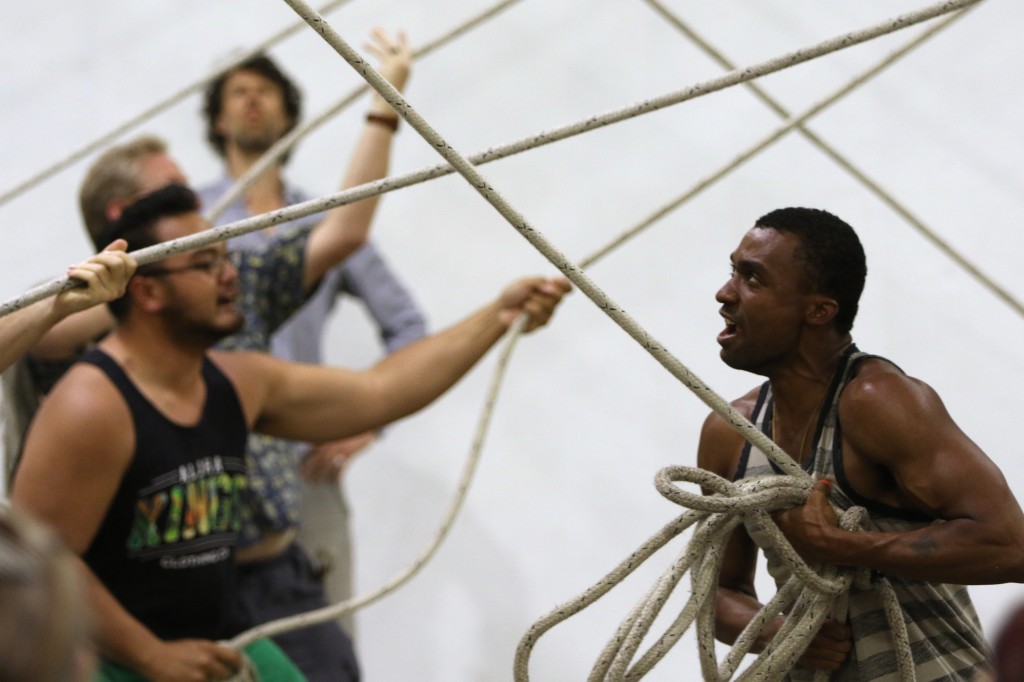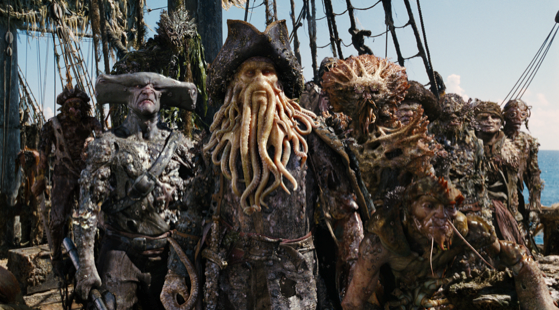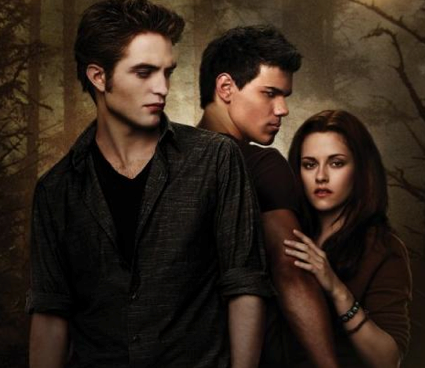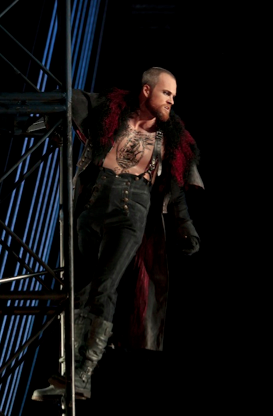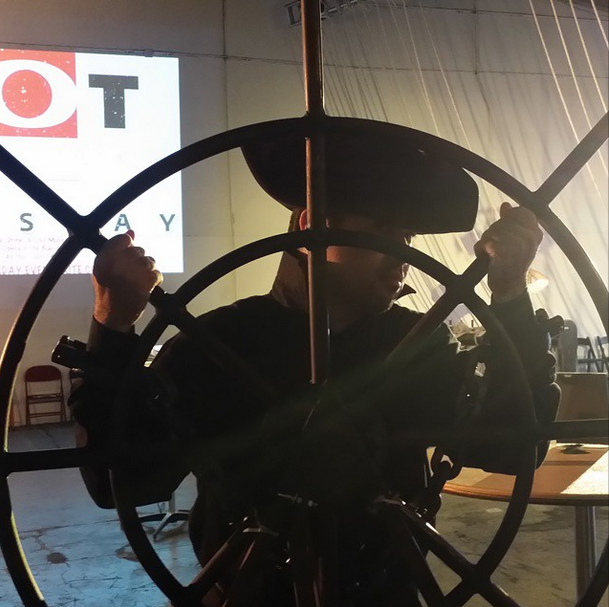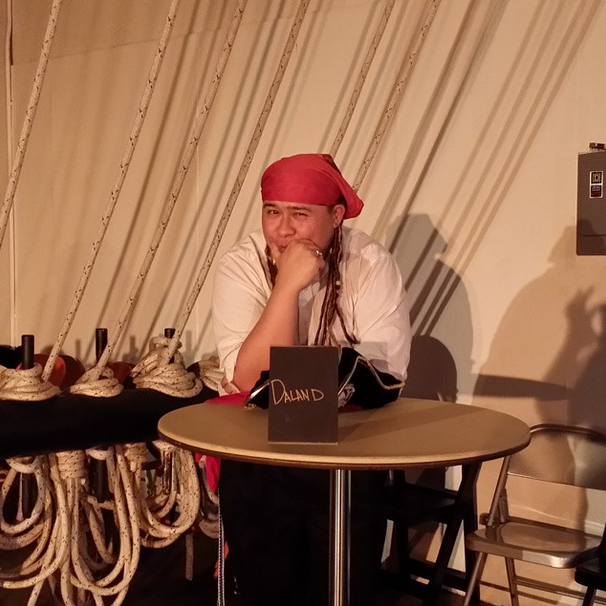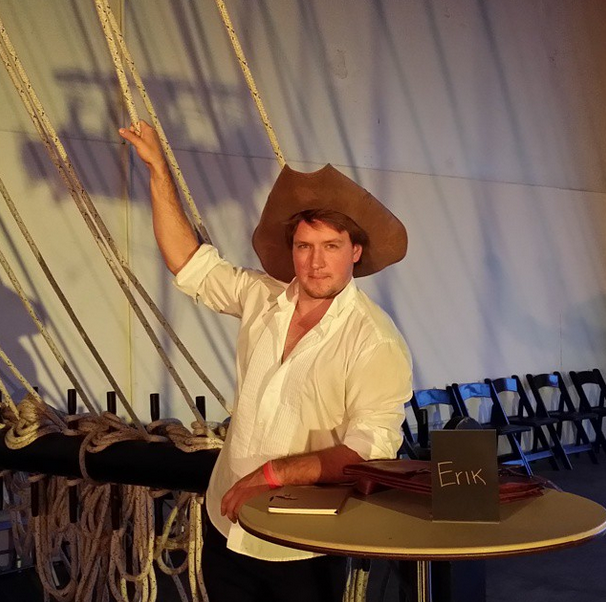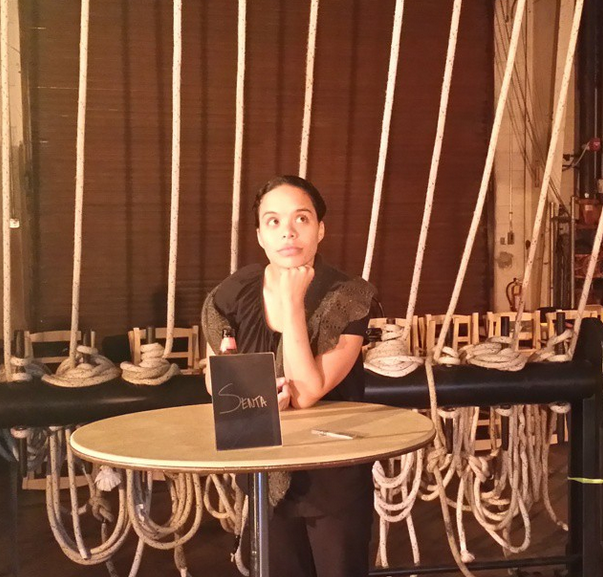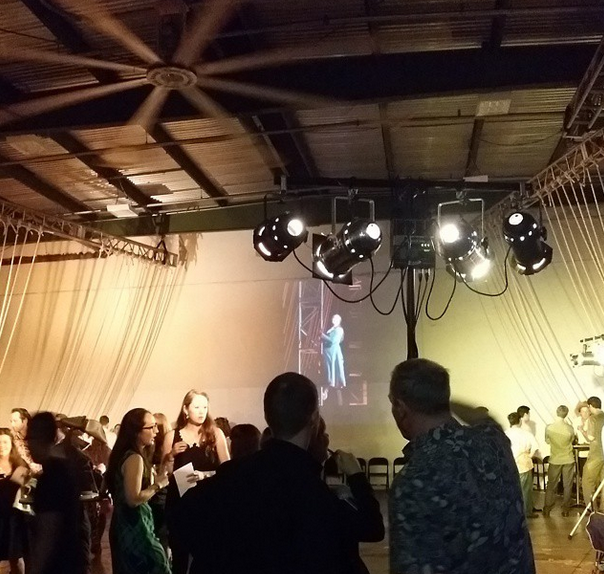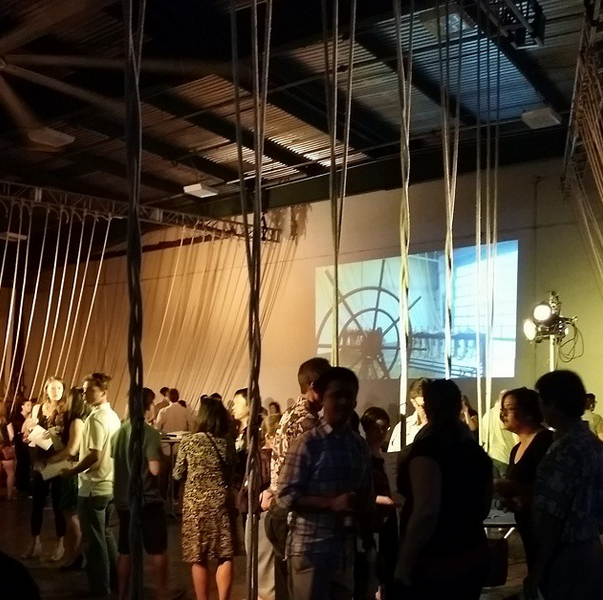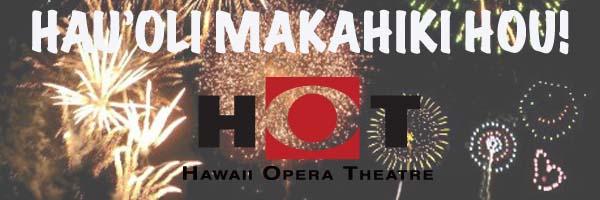The Flying Dutchman opens this week!
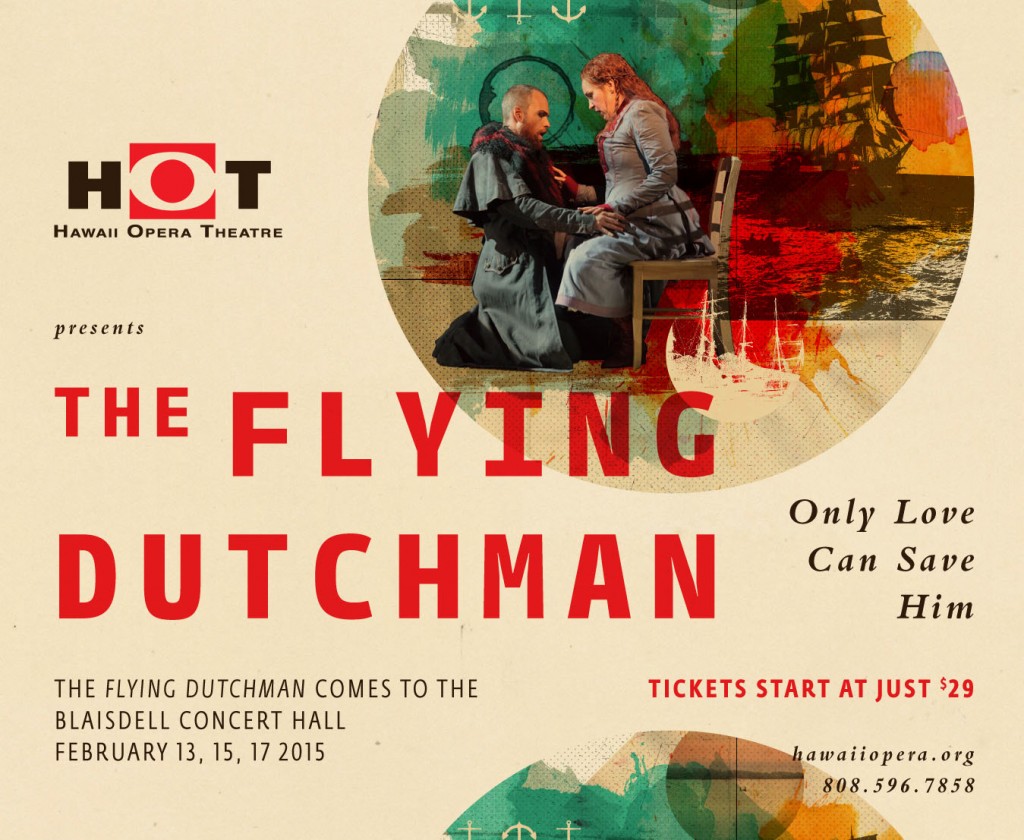
Originally from the Glimmerglass Opera Festival, we are thrilled to launch the first remount of the production! Joining us in Honolulu are a number of people who were a part of the original production, including Sara Widzer, who directs HOT’s production of The Flying Dutchman.
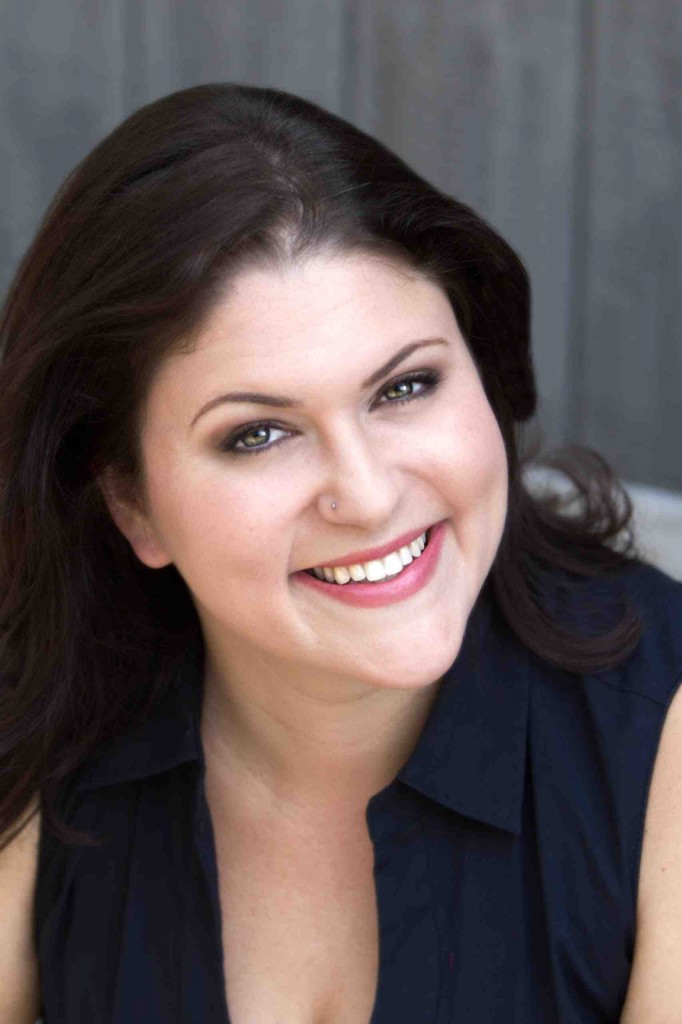
Sara, a former Young Artist at the Glimmerglass Festival (’12 & ’13), was the Assistant Director of the production when it opened in Cooperstown, NY.
We are thrilled to have her share her experience and vision here in Honolulu! HOT asked Sara a few questions amidst her busy Rehearsal Schedule and she was able to get share some amazing insight into her experience. Enjoy!
HOT – What drew you to opera?
SARA – It was a fluke but looking back, I cannot believe that it didn’t happen sooner. I grew up doing musical theatre and Shakespeare — I’m a classically trained actress and studied at RADA in London, I went to college for acting and directing, taught acting and other theatre classes for ten years after undergrad, but had no real interaction or relationship with opera other than studying directors like Robert Wilson and Peter Sellers who work in all performing art forms.
In 2006, I was directing a production of As You Like It set in Andy Warhol’s Factory (an adaptation of a production I was in at RADA), and instead of using Shakespeare’s songs, the cast sang songs by Lou Reed, The Stones, and other bands of that time period. It was rock’n roll Shakespeare and I loved it! At that point, all I really wanted to direct were productions like that…musical Shakespeare; Kenneth Brannaugh made a movie musical of Love’s Labor’s Lost in the late 90’s early 2000’s and he used all Cole Porter and Gershwin music, it was not a great movie but I loved it and was totally inspired. I may have been one of the only people to see it though. Anyway, while working on this production of As You Like It, my musical director, who is an opera-singer turned rock-singer/song writer and voice coach, suggested that I look into directing opera since all I talked about was musical Shakespeare. I thought she was nuts! But was up for any new challenge and valued her opinion. (Fast forward a couple of years, and to my grad school experience, all I talked about was how opera is musical Shakespeare was determined to write a book about Mozart and Shakespeare and how similar they are. I have no desire to write that book but still stand on a tall soap box when it comes to the similarities between Shakespeare’s plays and Opera). Funny enough, her friend was the Artistic Director of a small opera company in Pasadena and they had lost their director for their upcoming production of Giulio Cesare mid rehearsal. So I jumped in. It was an incredible experience and introduction to opera because all of the recit was done in English – I used my experience working with playwrights to adapt the recit into more “speakable” text as well as my work as a teacher to coach the singers on speaking text and how to transition between recit and song/aria – and then the arias were done in Italian. I loved coaching the singers on these arias and helping them find dramatic justifications for all the repeats within their pieces. I was shocked how much like straight and musical theatre opera was, except for the foreign languages. Looking back, well of course they’re the same…they’re all theatre!
The company loved what we all did with Cesare and invited me back to direct their production of Faust. It was during this production that I first experienced the exciting additional dramatic storylines that exist in opera and not in spoken theatre: in spoken theatre, the actors have the lines they say and the other characters’ text to figure out what is the subtext and given circumstances of their world and lines. In opera, not only do you have text, but the text has a vocal line and then there is the orchestra/accompaniment underneath the vocal line, which is 3 given levels of story telling where spoken theatre has 1–they must find their others. Every composer and librettist found a way to put the drama in the music with the text but my favorites have become Mozart, Verdi, Puccini, and Wagner…they are all storytellers and theatre practitioners as well as composers. Basically, after Faust, I went off to direct at a summer program where I directed Pagliacci — made use of my background in Commedie dell’arte and worked with singers who were willing to take the acting journey as well as the musical one — and came back hooked. I applied to Masters Opera Directing programs to learn more about musician’s languages and how opera singers are trained and think, so that I could use their language to bring my theatre and actor’s background into the rehearsal room . It seemed only fair that if I was going to impose a new way of performing – a new golf swing as it were- on them, that I should learn a bit about their world and current swing since it’s all about collaboration!
HOT – How does your vision for the remount of this production align & contrast with the original production?
SARA – I wouldn’t say I have a different vision for this remount then that of the originial production. I had the honor of Assisting Francesca Zambello, the original director and creator of this production, at Glimmerglass during the 2013 season, and consequently worked very close with our designers. I loved and immediately connected to this concept and it is hard to imagine doing the Flying Dutchman any other way or with other performers.
My vision, as it were, was to recreate the world that Francesca and her team worked so hard to birth and then encourage our returning actors–2 years later–and the new members of the team, to find the humanity in the piece once more. While much of the blocking is the same and some has been fined tuned, a remount is never about creating a carbon copy, but recreating the essence of the world. We have new performers, and returning actors who are in different places in their lives, so in many ways its a new show. My background in theatre and as an actress has taught me to never ignore what is in front of me/you. Too often we look without seeing or hear without listening…to remount this production meant I had to see who and what was in front of me in order to guide these actors towards seeing and listening within this world.
HOT – What does having a background in Acting bring to the table as a Director?
SARA – As an actress, I am trained to find my character’s objective…what I want…and track it through the journey of the play- what makes this day different from other days and why am I a part of it. I’m trained in pulling apart the text for all the answers I can find about my character and the world my character exists in. As a director, it is my job to find and track each character’s objective and overall arc, as well as the overall objective/theme of the piece. The director has to pull back and see more than the individual actor sees and help guide all the actors on their journeys. I also understand the difference between acting and being having once performed and the different ways we as humans hide…some disappear and some over act. I have been there and know the struggles that actors encounter on the road to bringing any set of text to life truthfully. And having been trained in a variety of techniques, I am able to see if an actor needs to navigate the story and rehearsal process using a different approach then what others are using: some people are physical creators while others are intellectuals, some create from the outside in and some from the inside out. It is not fair to say those who can’t teach… I was a good actress, but I am much better at helping other actors strengthen their crafts as a teacher and creating a playground and map for them to play on as a director.”
Most directors come to the table with a previous bag of tools — most opera directors I have met used to perform themselves or were once stage managers, which brings a whole other skill set to the table. My background allows me to help decode the acting map/dramatic cues provided by the composer in the music, work with designers to bring this map/playground to life, and then provide the safe space for the actors to play and climb. Their objectives are their if they listen, but many of them do not know what an objective is, so how can they look for it. I spent eight years teaching at the Lee Strasberg Theatre Institute in Los Angeles, which is an American technique influenced by the Russian practitioner Konstantin Stanislavsky. Strasberg’s approach focuses on physical awareness of the entire instrument and how to recall memories through all the senses. Many singers, all actors actually, are emotionally disconnected from their bodies, their creative impulses exist on their faces or through their singing, but as living breathing humans our impulses are fully body. We talk with our hands, we feel and express using our whole body. Lee Strasberg was a huge lover of opera, classical music and dance, and the power that music had over all the senses and consequently the influence and impact it had on actors. He was also aware of the physical and emotional disconnect between singers, dancers and actors with their bodies so he created specific exercises to address this. When I watch a singer, I am watching their entire body, how they manifest, hold, and release physical tension- some necessary, some not, how they combine their technique with their story telling. Sometimes, encouraging a singer to focus on their objective in the story, which allow them to breathe to communicate rather than to make sound, ultimately deepens the breath and creates more support, can make the difference between an engaged or disengaged performance. It’s fascinating to work with each singer but It is a fine line to dance between acting coach and director, and unfortunately, if someone has less technique then that must infiltrate the rehearsal process but without them knowing it.
It is also exciting to meet and work with opera singers like Ryan McKinny, who is a real singing actor. He pulls apart his text as well as his music and listens to what the composer is telling him. In opera, the world is so heightened that speaking is no longer sufficient – why it is similar to shakespeare who writes in blank verse and prose – so everyone sings. That doesn’t mean they sing songs, but they communicate through singing. Ryan makes this a musical extension of the objective rather than just music…he gives breath and life to the music and text to make the theatre live physically and audibly. It is so exciting work with opera singers like Ryan because there is a sense of play and experimentation in the rehearsal studio and every moment is alive on stage.
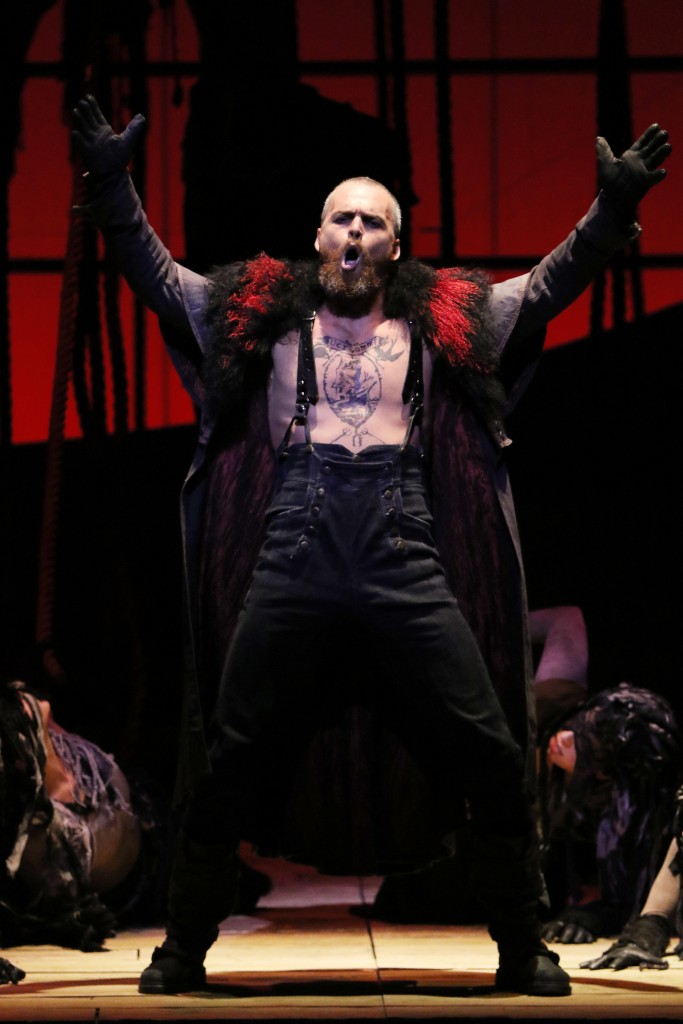
This production actually has three incredible singing actors, Jay Hunter Morris, Melody Moore and Ryan McKinny and to work with the three of them is like being a kid in a candy store. Since this project was put on the books, I have been so excited to revisit the Act 3 trio with these thee and see how the past 2 years and all their journeys have changed them and where the trio would go. They are present with one another, give to one another and take equally, and they are not frightened to bring their own humanity to the table. The Act 3 trio, along with every scene they are in, is potent and alive and I could watch it over and over again.
HOT – What do you love about this production?
SARA – Everything! The world, the set, the movement, the costumes, the story…the humanity. This opera could be set in a different time period or different location…but who these people are, the stories they are telling, and why they are there… there can’t be any other way because they are us/ They are EVERYMAN. Everyone can relate to redemption, even redemption through love, obsession…these are base emotions that exist in so many stories. And there is a reason we keep retelling these stories…they resonate. This production further ups the ante on the “accessibility” and “humanity” by adding a contemporary twist: It’s a sexy and gritty world which grabs people visually while the music and acting grabs you emotionally. It’s an great opera for first timers, if they can get past the WAGNER part of it: with the exception of the German, and we have supertitles, it’s so accessible with the young cast and contemporary take on the story with themes that ring true for everyone. And how can you not get excited about the set and what our amazing chorus does with it! It’s like giant playground for adults, and Eric Sean Fogel, our choreographer, has created movement that physicalizes the world the way the Wagner musically defines it. And for the first timer, there is not dull moment…everyone is engaged the entire time. We are creating life on a boat, life in a factory, and the life of these people….our audience should be able to relate to one if not all the people they see on stage. Our costume designer, Erik Teague, did a fantastic job combining the contemporary Steam Punk world with the traditional 18th century Romantic world.

